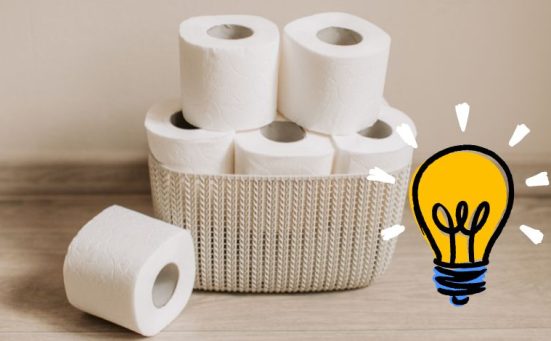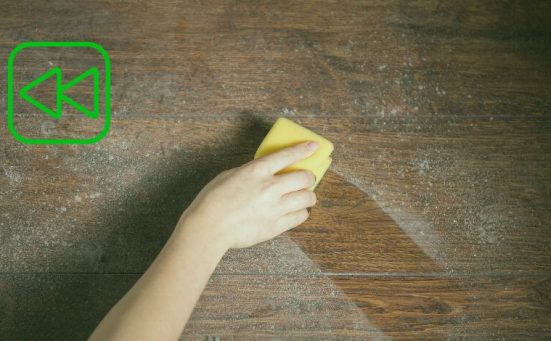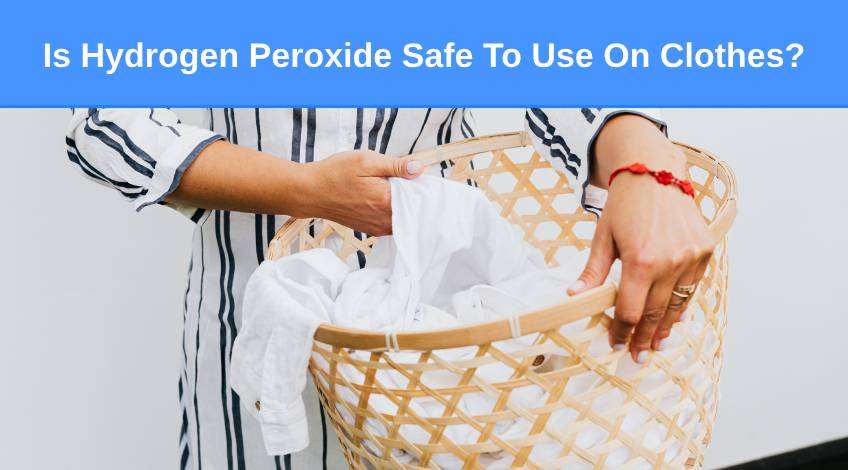
Is Hydrogen Peroxide Safe To Use On Clothes?
Hydrogen peroxide is a fairly common chemical found in many homes due to its disinfecting and cleaning powers. Most people are familiar with hydrogen peroxide as an alternative to bleach, but are concerned about using it on clothes.
As many types of bleach can cause some fabrics to become damaged or discoloured this concern is understandable. Which leads to the question: is hydrogen peroxide safe to use on clothes?
The answer is yes, hydrogen peroxide is safe to use on clothes as long as it is used correctly. In this article we look at hydrogen peroxide and how it can be safely used in laundry as well as looking at the many other uses for this product.
What Is Hydrogen Peroxide?
Hydrogen peroxide (H2O2) is a liquid with similar properties to water (H2O) except that it has an extra oxygen molecule. Its name derives from the fact that it has one hydrogen per oxygen.
The extra oxygen molecule is what allows hydrogen peroxide to work as an oxidising agent. It is one of the main ingredients of all oxygen bleach formulas because of its oxidising properties.
Hydrogen peroxide is typically available in different strengths with the most common being;
- 3% – Used for household cleaning, laundry, etc
- 10% – Used for bleaching hair
- 35% – Is considered to be food grade
- 90% – Is considered to be industrial strength
Having said that, you’re unlikely to be able to buy hydrogen peroxide in any other strengths than 3% or 10%.
How To Safely Use Hydrogen Peroxide On Clothes

Hydrogen peroxide is a safe alternative to using chlorine bleach (household bleach) in your laundry. But what is it good for? Hydrogen peroxide is good for;
Getting Whites White Again
Who doesn’t love white clothes? There’s nothing like that clean look of a fresh, clean white shirt. Sadly, white attracts dirt but not only dirt, deodorant residues, sweat, body oils, detergent residues as well as dye from other clothes in the wash.
This all contributes to it being more difficult to get whites brilliant again after just a short time. All you need to do to get your whites sparklingly white again is pour 1 cup (240 ml) of 3% hydrogen peroxide into the drum of your washing machine before adding the white clothes and run a regular wash cycle.
If you prefer, you could pour the 3% hydrogen peroxide into the detergent dispenser on your washer.
If you have a white garment with a particularly bad stain in the underarm region, you can make a paste using hydrogen peroxide and bicarbonate of soda and a little water. Apply this paste to the stain before adding the garment to the washer.
Revitalising Coloured Garments
Many brightly coloured garments can fade over time and begin to look dull and lifeless. This is typically due to dirt, sweat, deodorant, grime and other nasties getting absorbed by the fabrics.
You can revive those bright coloured fabrics using 3% hydrogen peroxide. However, not all dyes are colour fast. Which means testing a small unobtrusive area with hydrogen peroxide before washing the whole garment.
We recommend dipping a cotton wool ball in hydrogen peroxide and then dabbing this onto an inside seam or hem. If the cotton wool ball gets any of the colour from the fabric, it’s not advisable to use hydrogen peroxide to brighten the fabric.
If the garment passes the colour fast test, simply dilute 1 cup of 3% hydrogen peroxide into 2 cups of water before pouring the solution into the drum. Then add the dull clothes and wash using the regular wash cycle.
Removing Stains
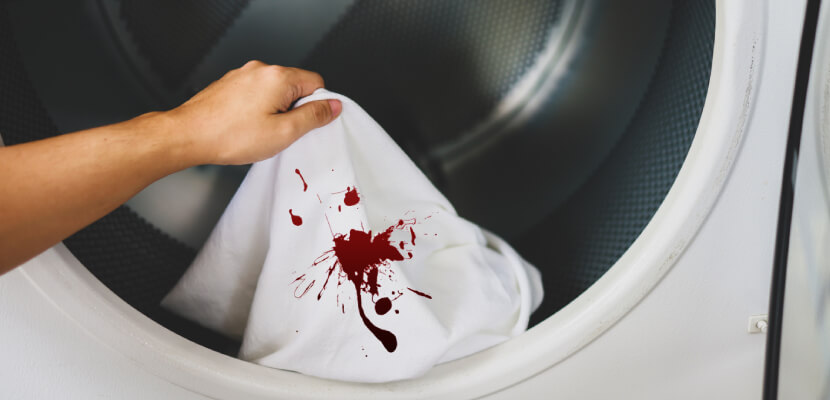
It’s a sad fact of life that our clothes get stained. The longer we own them, the more we wear them and the more likely they are to become stained. Using hydrogen peroxide will remove these unwanted and unsightly stains.
It works on many stains including;
- Fruit Stains
- Vegetable Stains
- Sauces
- Gravy
- Juices
- Blood
- Mildew
- Dye (from other clothes)
- And Many More
Before using hydrogen peroxide to remove stains from your garments, don’t forget to test for colour fastness on an unnoticeable area.
If the garment passes the colour fast test, all you need to do is pour some hydrogen peroxide onto the stain and allow it to soak in for around 10 to 15 minutes before washing the garment as normal.
Removing Sweat Stains
Everybody sweats especially during hot summers or when doing anything strenuous. There’s nothing we can do to prevent us from sweating, but there’s a great way to remove sweat stains. Probably the worst sweat stains and the most noticeable are armpit sweat stains.
To remove stubborn underarm sweat stains make a paste by using equal amounts of 3% hydrogen peroxide, bicarbonate of soda and water. Completely cover the stain in this paste and allow it to soak in for at least 30 minutes.
Longer is better, in fact, the longer you leave this solution soaking into the fabric, the better cleaning results you will get. After the desired time has passed, scrape off as much residue as possible, before washing the garment in the washing machine using your regular wash cycle.
Removing Oil Stains
If you’ve ever been unfortunate enough to get oil stains on any of your clothes, you’ll know just how difficult they are to remove. That stain is often still visible after 3 or 4 washes.
How to Remove Oil Stains using Hydrogen Peroxide
There is a way to remove oil stains from your clothes in one go. You will need a few ingredients to achieve this which are;
- 3% Hydrogen Peroxide
- Washing Up Liquid
- Bicarbonate Of Soda
Method
The first thing you need to do is place a piece of cardboard under the garment to prevent any oil from soaking through onto the other side of the garment.
Then dab at the stain using kitchen towel or an old cloth to remove as much excess surface oil as possible.
You then need to dilute the stain using a couple of drops of hydrogen peroxide. Then add a few drops of washing up liquid followed by a layer of bicarbonate of soda.
Please note: It’s important that these ingredients are added in the correct order to prevent any kind of chemical reaction.
Then, using a toothbrush scrub the area until there is a paste covering the whole area where the stain was. Allow this paste to sit on the stain for at least 30 minutes.
Then wash the garment in the washing machine using a cold water wash. It’s important that you use cold water as hot water could literally bake the stain into the fabric.
Removing Bad Smells
With so many of us using cooler wash temperatures nowadays, our clothes sometimes retain bad odours from sweat etc. This bad smell can be removed using hydrogen peroxide.
All you do is pour 1 cup (240 ml) of 3% hydrogen peroxide into a bowl or bucket and fill with water. Agitate to ensure the solution gets mixed in and then add the smelly garments.
Ensure the garments are fully submerged and allow them to soak for around 30 minutes. Before washing in the machine in the usual way.
Can I Use Hydrogen Peroxide On Black Clothes?
As we saw earlier, hydrogen peroxide can be used on any white or coloured garment as long as that garment is colour fast. Depending on the quality of the garment and where it was made, the dye might not have been set properly.
You should always do a test on an unobtrusive area of the garment like the inside hem or seam to check whether the dye is set or not.
If the colour is fast, you can use hydrogen peroxide on black garments to remove stains or smells.
Using Hydrogen Peroxide Also Cleans Your Washing Machine
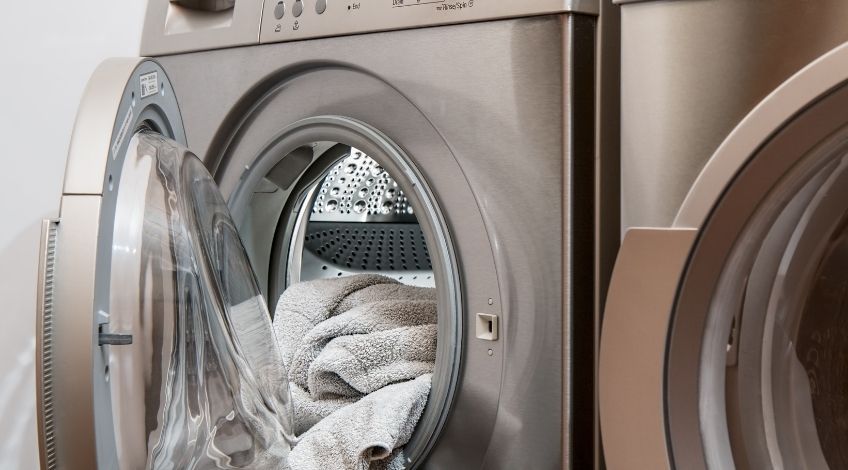
Another bonus of using hydrogen peroxide in your washer to clean your clothes is that it cleans the washing machine at the same time. Over time, washing machines can become the breeding ground for mould and mildew.
Limescale from hard water can accumulate in the crevices within your washer. These collect detergent and fabric softener residue which then creates the perfect places for mould and mildew as well as germs and bacteria to start to form.
This leads to that musty, mouldy smell that’s often found in damp places and can also be found in washing machines. When you run your regular hot service wash try adding 2 cups (480 ml) of 3% hydrogen peroxide to the drum.
This will remove all of those nasty germs, bacteria and mould and mildew spores. Leaving your washer smelling fresh and clean and bacteria free.
Other Uses For Hydrogen Peroxide Around The Home
As we have seen, hydrogen peroxide is great for use in the washing machine and for removing stains and smells from clothes. It can also be used instead of using many other cleaning products around the home. Other uses for hydrogen peroxide include;
Cleaning The Sink
To successfully clean the sink you should use a sponge to rub bicarbonate of soda and water onto the surface of your sink. Then pour some hydrogen peroxide over the sink and allow it to soak for 15 minutes. Then rinse all of the solution away.
Cleaning The Toilet
To clean the bowl of your toilet simply pour ½ a cup (120 ml) of 3% hydrogen peroxide all around the bowl and leave for 30 minutes. Then using the toilet brush, clean the toilet bowl as normal before flushing the solution away.
Getting The Dishwasher Clean
Dip a cloth in 3% hydrogen peroxide and wipe the seals, spray arms, filter cover and baskets (including the utensil basket) in your dishwasher. Then run a cleaning cycle as normal to remove all unwanted smells and germs and bacteria.
Disinfecting Bins
Wash the bin in warm soapy water to remove as much debris as possible. Then wipe with a cloth dipped in a 50/50 solution of 3% hydrogen peroxide and water. Leave the solution to dry on the bin before reusing.
This works for cat litter trays as well.
Keeping Glass & Mirrors Clean
If you want your glass and mirrors streak free, Spray the surface with a 50/50 mixture of 3% hydrogen peroxide and water. Then using a paper towel or microfibre cloth, wipe the solution away and buff it up to make it shine.
Sanitising Toothbrushes
Over time your toothbrush can become a breeding ground for germs and bacteria. You can sanitise your toothbrush by soaking it in 3% hydrogen peroxide for 5 minutes. Be sure to rinse the toothbrush before reusing.
Cleaning Makeup Brushes
To clean makeup brushes simply remove excess makeup using shampoo before soaking the bristles in water mixed with 1 teaspoon of 3% hydrogen peroxide. Allow the brushes to soak for 10 minutes or so before rinsing with fresh water.
Where Can I Buy Hydrogen Peroxide?
Hydrogen peroxide can be purchased from pharmacies and online. We have found the following hydrogen peroxide products on Amazon for instance;
Where Else Is Hydrogen Peroxide Found?
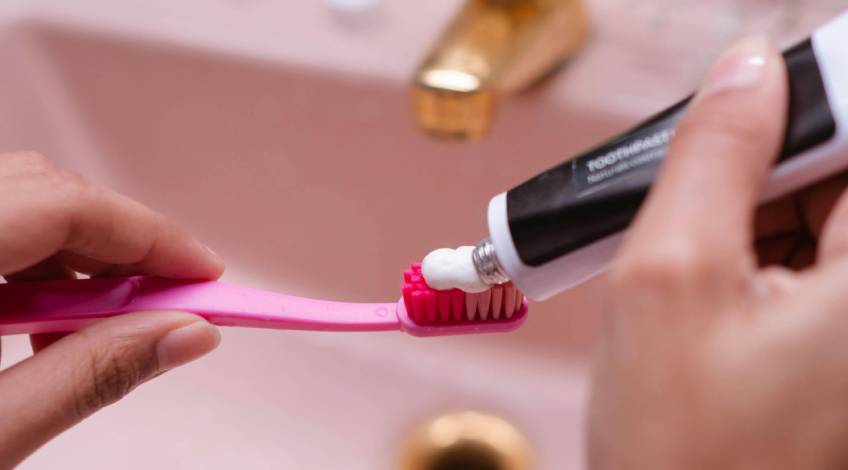
There’s a good chance you’re familiar with the effects of hydrogen peroxide already. Especially if you’ve ever used oxygen bleach in your washing machine.
This is because hydrogen peroxide is one of the main ingredients in oxygen bleach which is made up of hydrogen peroxide and sodium carbonate.
However, oxygen bleach is not the only place you’re likely to find hydrogen peroxide as one of the main ingredients, it is also found in many;
- Hair Dyes
- Bleaches
- Disinfectants
- Toothpastes
- Mouthwashes
- Kitchen Cleaners
- Bathroom Cleaners
- Laundry & Stain Removers
- And Many More
A Brief Word On Safety
As hydrogen peroxide is a chemical you might be wondering if it’s safe. Like most chemical substances, hydrogen peroxide is safe as long as it is used in the correct way.
3% hydrogen peroxide is considered to be safe however, if ingested, inhaled, splashed in the eyes or left on skin for too long it can be harmful.
With that said, 10% hydrogen peroxide is used as a hair bleach without any serious side effects.
When it comes to using it around the home or in the washing machine, you should never mix any other chemicals like bleach etc with hydrogen peroxide. This could not only be detrimental to health it could also lead to an explosion under extreme conditions.
SEE ALSO: Which Laundry Stains Can Lemon Juice Remove?
Frequently Asked Questions
It is OK to wash white clothes with hydrogen peroxide as long as it is not too strong. It is recommended that a 3% hydrogen peroxide is used to wash white clothes to brighten the whites, disinfect the garments and remove stains.
Hydrogen peroxide is a chemical made from hydrogen and oxygen (H2O2) and is an oxidising disinfectant. Although it is not often referred to as a bleach, it is one of the most common bleaching agents used in many detergents and cleaners.
As bleach is such a harsh chemical, it can cause damage to many fabrics. Hydrogen peroxide is a far safer way of returning white clothes to their previous bright condition.
Hydrogen peroxide can be used on any colour-stable fabrics. You should always test on a small unobtrusive area like an inside hem or seam before use.
Also, follow us on Pinterest ...


